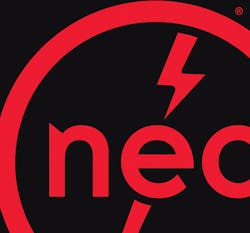There’s a myth that floats around industrial facilities. The myth is that you should try to get three feet of space (using a crooked tape) in front of electrical equipment.
This myth contradicts both the NEC and the OSHA clearance tables, both of which provide the minimum (not maximum) clearance [110.26(A)]. Depending on the exact circumstances, that legally required minimum can be five feet, not three feet.
But you can’t just use those table minimums and call it a day. There’s another factor, and it relies on proper analysis of the actual situation. The access and working space must permit ready and safe operation of the equipment [110.26].
If the maintenance procedure for that equipment requires portable lights, a maintenance cart for test equipment, and two electricians, the chart-required minimums probably are not going to be adequate.
Instead of trying to see how tightly you can squeeze down the space around (and especially in front of) equipment, determine what space is needed to safely keep that equipment running.
When the revenue-per-square-foot folks raise objections to losing six precious inches, you can point out that this is the space that’s needed to ensure the other space is actually making the company money.
About the Author

Mark Lamendola
Mark is an expert in maintenance management, having racked up an impressive track record during his time working in the field. He also has extensive knowledge of, and practical expertise with, the National Electrical Code (NEC). Through his consulting business, he provides articles and training materials on electrical topics, specializing in making difficult subjects easy to understand and focusing on the practical aspects of electrical work.
Prior to starting his own business, Mark served as the Technical Editor on EC&M for six years, worked three years in nuclear maintenance, six years as a contract project engineer/project manager, three years as a systems engineer, and three years in plant maintenance management.
Mark earned an AAS degree from Rock Valley College, a BSEET from Columbia Pacific University, and an MBA from Lake Erie College. He’s also completed several related certifications over the years and even was formerly licensed as a Master Electrician. He is a Senior Member of the IEEE and past Chairman of the Kansas City Chapters of both the IEEE and the IEEE Computer Society. Mark also served as the program director for, a board member of, and webmaster of, the Midwest Chapter of the 7x24 Exchange. He has also held memberships with the following organizations: NETA, NFPA, International Association of Webmasters, and Institute of Certified Professional Managers.
